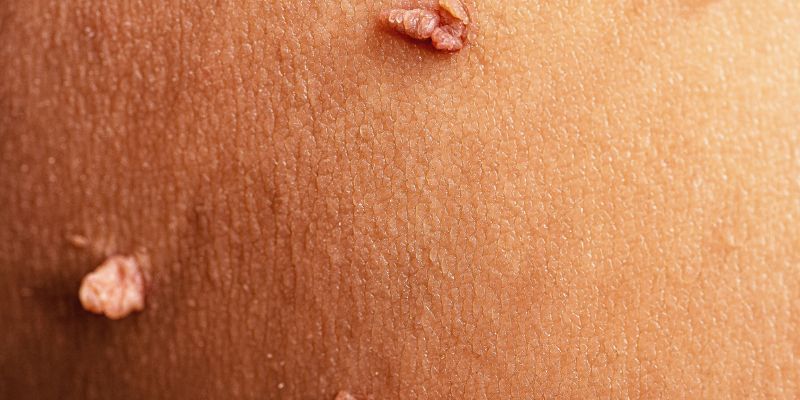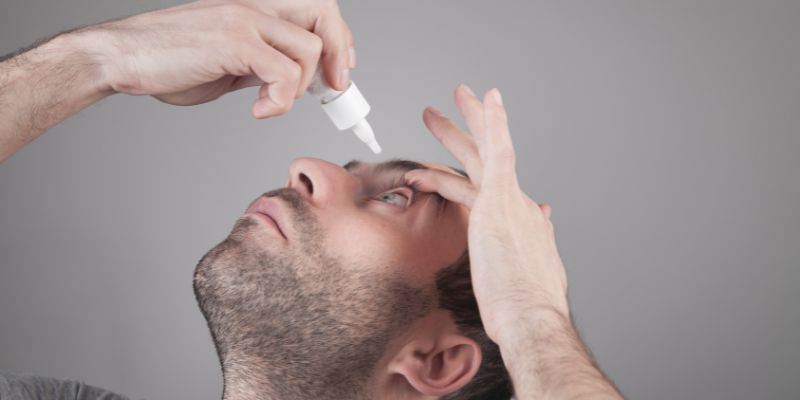What's the Link Between Skin Tags and Diabetes: An Understanding
Skin tags are tiny, soft growths on the skin often found in regions where the skin folds, including the neck, underarms, and eyelids. Usually benign, they can be annoying, particularly in large numbers. Fascinatingly, studies point to a possible connection between diabetes, especially Type 2 diabetes, and skin tags.
People with diabetes often have abnormalities in their skin, including skin tags, which occasionally serve as a sign of the illness. The association between diabetes and skin tags will be discussed in this article. And what you should know should you see these growths.

What Are Skin Tags?
Often developing in skin creases or locations where the skin scrapes against itself, skin tags called acrochordons are small, benign growths. Soft, flesh-colored, they hang from the skin on a tiny stem. Though not dangerous or painful, rubbing jewelry or clothing might irritate them. Especially in those over 40, those who are overweight, and those with metabolic diseases, skin tags are rather common.
Although they look different, skin tags are sometimes confused with other skin disorders. Though the precise origin of skin tags is unknown, elements including friction, hormone fluctuations, and insulin resistance are involved. Although their existence may occasionally be cosmetic, especially for those with diabetes, they could indicate an underlying disease.
The Connection Between Skin Tags and Diabetes:
According to recent studies, Type 2 diabetes and skin tags have a noteworthy relationship. Multiple skin tag sufferers are more likely to have insulin resistance, a disorder that results in Type 2 diabetes, according to studies. When the body's cells grow insensitive to insulin, the pancreas generates more hormones in response to insulin resistance. Changes in the skin, including the growth of skin tags, might result from this overproduction.
Insulin resistance in those with diabetes is believed to be responsible for surplus insulin flowing in the bloodstream, which helps to create skin tags. These growths are particularly typical in places prone to friction, which is another reason persons with obesity are a risk factor for diabetes and often get skin tags. Although not everyone with skin tags has diabetes, they can act as an early warning sign and encourage people to get checked for the illness.
How Skin Tags May Be a Warning Sign
Though benign, skin tags could be a warning sign of underlying metabolic problems such as diabetes or insulin resistance. Should you observe a sudden rise in skin tags, particularly in places like the neck or underarms, it is advisable to check other diabetes-related symptoms, including extreme thirst, frequent urination, or tiredness.
Even before more clear symptoms of diabetes show, doctors sometimes regard skin tags as a sign of insulin resistance. It implies that you should have multiple skin tags, review your blood sugar levels, and speak with a doctor about general health. Steps to control the illness and lower the risk of consequences can be started sooner, the sooner insulin resistance or diabetes is identified.

Other Skin Conditions Related to Diabetes
Apart from skin tags, people with diabetes are more likely to have various skin disorders. For instance, another skin condition sometimes linked with diabetes is acanthosis nigricans. Particularly in the neck, armpits, and groin, this disorder produces dark, thicker areas of skin. Acanthosis nigricans is similarly connected to insulin resistance, much like skin tags.
Another prevalent skin complaint among people with diabetes is diabetic dermopathy. Usually, on the legs, this disorder causes little brown, scaly spots on the skin. These patches indicate changes in the skin brought on by diabetes, even if they do not cause discomfort or pain.
Diabetes alters blood flow. Hence, those with this disorder may have poor healing of wounds and a more risk of infections, particularly skin ones. Skin disorders such as diabetic dermopathy, acanthosis nigricans, or skin tags should not be overlooked since they could point to inadequate blood sugar control.
Prevention and Management of Skin Tags
Although most skin tags are benign, many people's first concern is stopping them from developing. Usually, treating skin tags requires treating the underlying disorders, including obesity and insulin resistance. Important ways to stop the growth of skin tags, especially for those at risk of diabetes, are maintaining a good diet, doing out consistently, and controlling blood sugar levels.
There are numerous ways to treat individuals already with skin tags. A doctor can remove skin tags with freezing, cutting, or burning techniques. But, especially if you have diabetes, you should see a healthcare provider before choosing a course of action. Those with diabetes must practice good wound care to avoid problems and infections during healing.
When To See A Doctor?
If you have several skin tags, particularly in line with other diabetic symptoms, you should see a doctor. Early identification of diabetes or insulin resistance helps control the disorder before it causes more major medical issues. Your doctor will order blood tests to evaluate your general health and examine your blood sugar levels.
You should also get medical advice if your skin tags irritate, hurt, or alter your appearance. Though rare, skin tags can occasionally be confused with other skin lesions, including those that may be malignant. A medical practitioner can assist in distinguishing between benign skin tags and other more alarming skin disorders.
Conclusion:
Though they seem to be little skin flaws, skin tags could indicate an underlying illness, including diabetes or insulin resistance. Although they are not dangerous, a growth in skin tags could be a reason to monitor your health more closely. If you have several skin tags and particularly experience additional diabetes symptoms, you should talk to your doctor. Control of your blood sugar level and general health will assist in lessening the development of skin tags and other skin-related problems.












